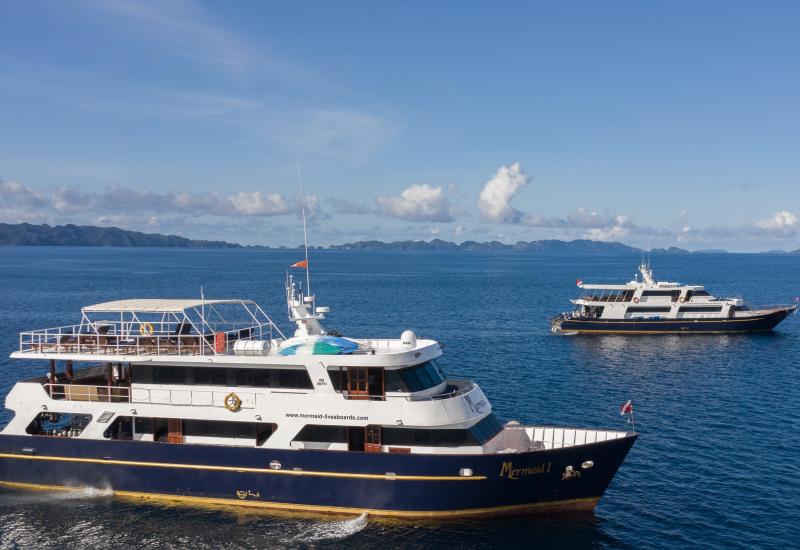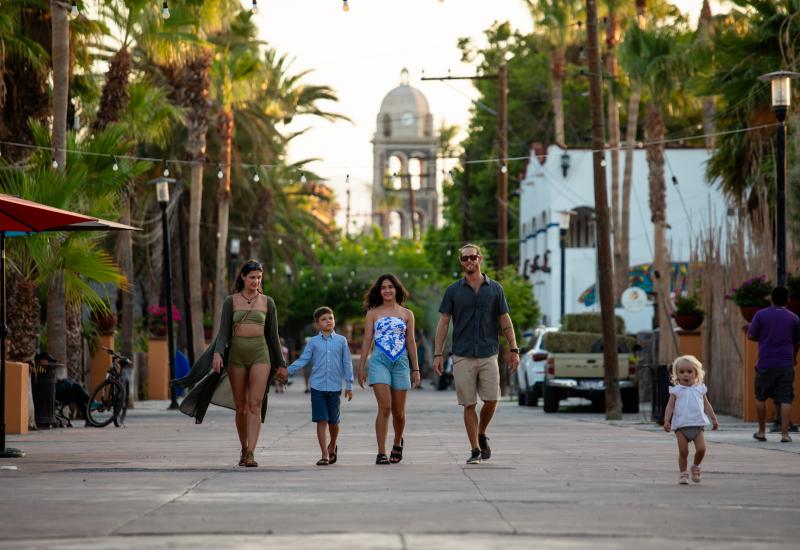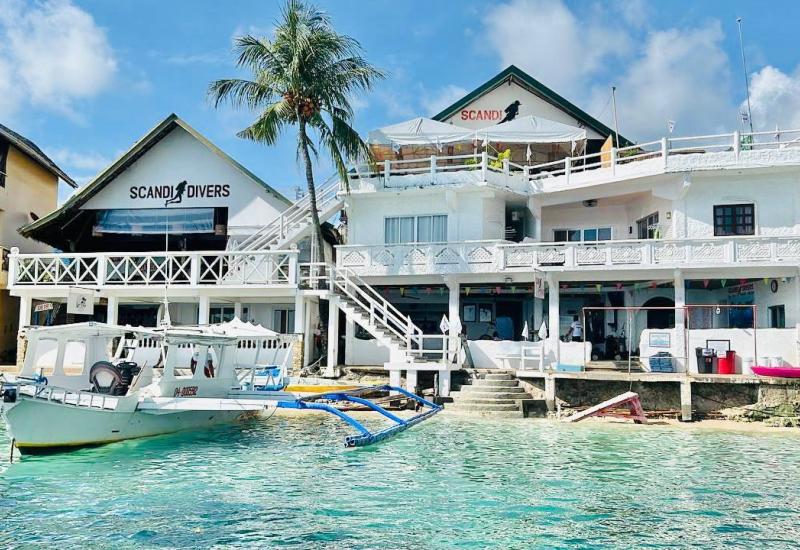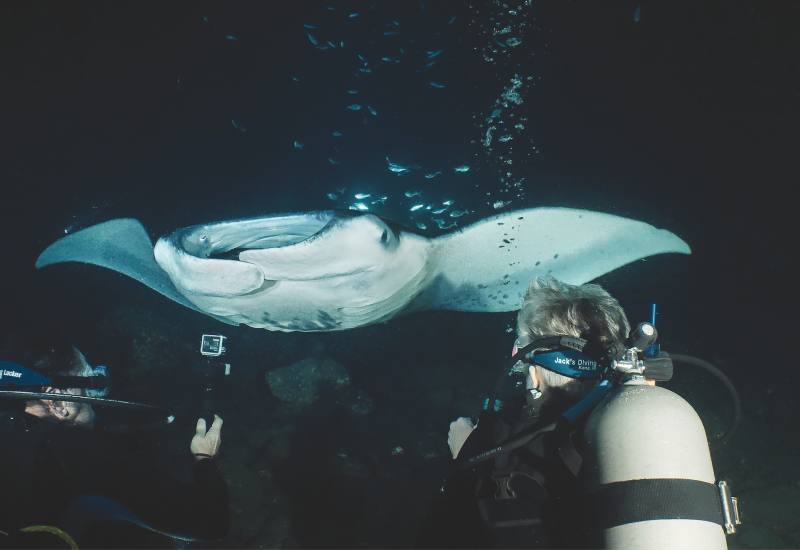3 Dive Destinations to Help You Fight the Winter Blues
Planning a trip to one of these dive hotspots? Here’s what you need to know. Featuring insight from locals, tips for timing seasonal experiences, and the scoop on favorite dive sites, as well as some lesser-known sites you’ll want on your radar too.

Gerald NowakA Sandager’s wrasse among kelp in the Poor Knights Islands.
New Zealand
Under the Radar
The subtropical waters of the Poor Knights Islands, off New Zealand’s North Island, tend to steal the spotlight (and for good reason—the diving is epic). But it’s worth venturing to the South Island for more than its impressive and extreme mountainous scenery and the famous Milford Sound. In a remote location in the Cook Strait in the Marlborough Sounds, you can dive the 337-foot-long wreck of the Russian cruise liner MS Mikhail Lermontov, which sunk after striking rocks in 1986. The wreck bottoms out at 111 feet, with opportunities for divers with the proper training to penetrate it. It’s in a no-take area teeming with life, including curious blue cod.
The Classic Dive
If you only have time to dive once or twice on a trip to New Zealand, make it the spectacular natural archway off the North Island’s east coast called Blue Maomao Arch, says Kate Malcolm, of Dive! Tutukaka, referring to the legendary site in the Poor Knights Islands Marine Re-serve. “Blue Maomao Arch is one of the places where you can understand what it is like to be a fi sh,” Malcolm says. “You just merge with their school.” In addition to the eponymous species, you’ll also likely see moray eels, nudibranchs and kingfish, among many other species.
Dive Report
The Poor Knights are consistent for “fishy goodness,” says Malcolm, but spring is when fi sh really go crazy at sites around the islands.“Ctenophores (iridescent comb jellies) come up from the deep; we have migratory whales; and only last week we had wild orca visiting in the marina,” she says about a recent Southern Hemisphere spring dive day.
Plan a Trip
Schooling fish are common year-round in the marine re-serve and trevally feeding on krill in Maroro Bay bubble the surface in late summer and early spring. But January kicks off the season of amazing cetacean activity and brings other reliable pelagic en-counters here. “Pelagic mantas, mola mola and stacking stingrays forming an incredible squadron in our arches” are among the wonders you might witness, Malcolm says.
Second-Time Visitor
When it comes to topside adventures in Aotearoa (the Maori name for New Zealand, which loosely translates to the “land of the long white cloud”), the Milford Track—a 33-mile, four-day, three-night hike on the South Island, with fjord and alpine views—is the most famous trek. On a return visit, consider opting for a sea-kayaking and camping adventure instead in the Marl-borough Sounds, which are pocketed with stunning sandy coves and bays that are a delight to explore.
Tobago
Under the Radar
In addition to awesome drift diving, one of the most exciting things about diving in Tobago is the diversity and abundance of marine life you’ll see underwater here, says Sean Robinson, of Tobago Dive Experience. And that includes many crossover species from nearby coastal South American waters. At the dive sites Goat Island Dream and Cathedral, look for elegantly decorated giraffe-spotted garden eels, one such crossover species that can be seen on rubble bottoms about 60 feet down, Robinson says.
The Classic Dive
“Our sponge life is bigger than anywhere,” says Robinson, adding that most divers come to Tobago determined to see the biggest boulder brain coral in the Caribbean at a site called Coral Garden. The living structure, thought to be 450 years old, stands 12 feet tall and stretches 16 feet across. Japanese Gardens is another favorite reef dive, Robinson says: “It’s a beautiful drift dive, with chutes you fly through and absolutely gorgeous sponge life, soft corals and hard corals all around."
Dive Report
Serendipitous encounters abound in Tobago’s waters. And a recent one happened while divers were relaxing on a surface interval between dives in the shallows near Little Tobago Island in the Bay of Speyside, says Robinson. “A manta came right by the boat, and everyone jumped in to snorkel,” he says. “That’s the kind of excitement that can happen in Speyside."

Shutterstock/Martin MecnarowskiA Caribbean hummingbird in the Main Ridge Forest Reserve.
Plan a Trip
The best time to see mantas and scalloped hammerheads around Tobago is when the waters are at their coolest, from December to April, says Robinson. Manta rays commonly come into the Speyside basin, much to divers’ delight, and scalloped hammerheads can often be seen at sites around the outer islands of St. Giles.
Second-Time Visitor
Tobago is a bird-watcher’s haven and home to the oldest protected rainforest in the Western Hemisphere, Main Ridge Forest Reserve, established in 1776. Robinson says due to its proximity to mainland Tobago, Little Tobago Island is one of the most accessible places in the world to see nesting red-billed tropicbirds between December and April.
Papua New Guinea
Under the Radar
Off New Hanover Island, near the more famous wreck of the Sanko Maru, lies the wreck of a Japanese mini submarine, the only one in the world accessible to recreational divers, says Dietmar Amon, of Lissenung Island Resort. The sub sits upright and intact in roughly 60 feet of water, with an open conning tower hatch that’s too small for divers to enter but nonetheless fascinating to see.
The Classic Dive
Near a channel on the southwestern tip of New Ireland Island, Albatross Passage is a favorite with underwater photographers thanks to the sheer abundance of marine life that can be seen here on the incoming tide—including eagle rays, whitetip, blacktip and gray reef sharks, jacks, barracuda and sometimes even mobula rays. “The wall at the entrance to the passage is covered in beautiful fans and black corals,” Amon says.
Dive Report
“A recent dive at Albatross Passage was amazing,” says Lissenung Island Resort dive-master Peni Paulias. “We first saw a 7-foot-long giant Queensland grouper, then three eagle rays flew past. And in the background, there were at least half a dozen gray reef sharks. On the wall, we saw a pygmy seahorse, a leaf scorpionfish and porcelain crabs.”

Steve JonesTropical fish school on a reef in Kimbe Bay off New Britain Island.
Plan a Trip
You can dive year-round in Papua New Guinea, but the months of May and June and October to December tend to have the best visibility at sites in Kimbe Bay and around Kavieng on New Ireland Island, home to Lissenung Island Resort. The resort’s turtle conservation program works to protect and rehabilitate hawksbill and green turtles. From November through the end of April, guests might see baby sea turtles hatching.
Second-Time Visitor
Make time to take in one of Papua New Guinea’s fascinating topside cultural festivals, such as the three-day Goroka Show in the country’s Eastern Highlands Province and the Mount Hagen Cultural Show, which draws roughly 100 tribes for traditional song, dance and pageantry.










